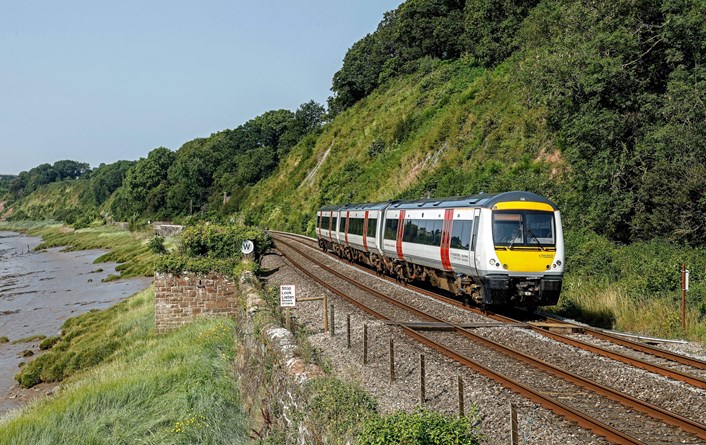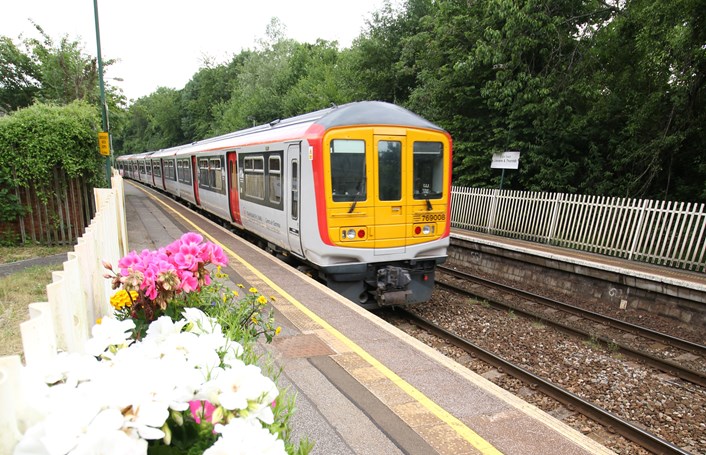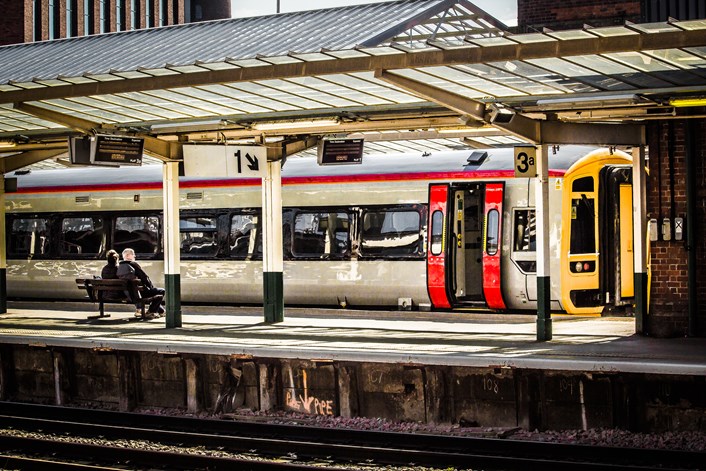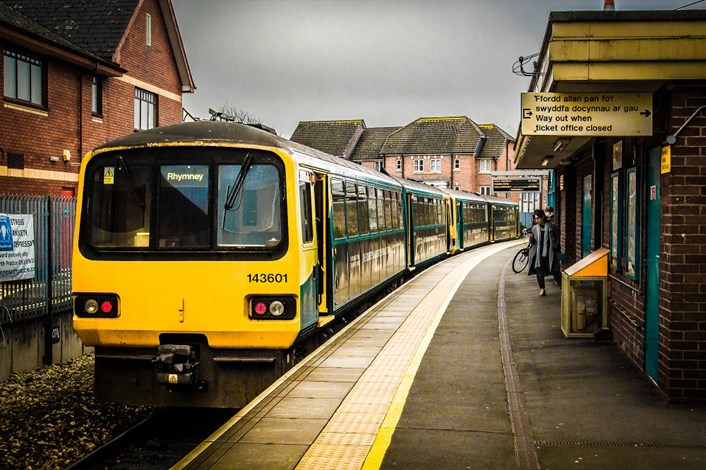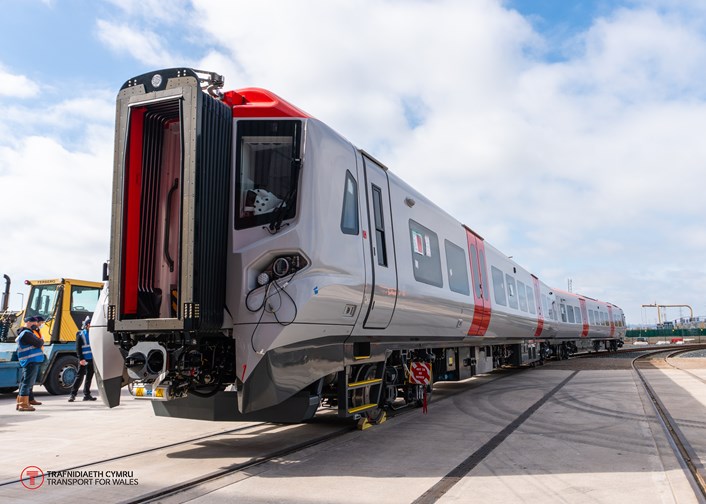17 May 2022
Over the last few months, we have been experiencing a significant increase in demand on many of our rail services, with more people enjoying ‘staycation’ holidays in the UK and local day trips.
This increase in the number of people travelling with us outside the traditional peak times has led to some trains being very busy. We have been working hard to alleviate this as much as possible, by adding extra carriages to the busiest services and providing buses to supplement trains. However, there are a number of key issues we face in responding to this.
We spoke to Colin Lea, our Planning and Performance Director, to find out what we’re doing to respond to some of the biggest challenges we're facing, and answer some of the most frequently-asked questions we receive from customers via our social media channels.
Why can’t you run more frequent services?
All rail timetables throughout Great Britain are all part of one interconnected system, brought together by our industry colleagues Network Rail. Our services interact with those from a number of different operators, and they in turn interact with even more services from the rest of the operators throughout the network. This means that crucial pinch points in the network have to be worked through and definitive ‘paths’ defined for each operator to work with. Therefore a train in Swansea needs to be timed to meet a defined pathway into Manchester Piccadilly, rather than necessarily being optimal across South Wales and the Marches.
Any timetable changes by other operators will have a ripple effect on our services. Timetables therefore have to be updated in conjunction with each other. The most recent national timetable update took place in December 2021, in which we restored more services that had been removed from the timetable during the Covid-19 pandemic, and we’re working on plans to add more services in future updates, particularly from May 2022 ahead of another busy summer period, as well as adding new services in years to come after the introduction of our brand new trains. By the way, we expect our first new trains to enter service this summer in North Wales.
Why can’t you add more carriages?
Trains come in different width profiles, known as loading gauges, meaning they don’t all fit on all parts of the network. For example, Pacer trains used to travel anywhere on the Valley Lines. They have gone, but the trains replacing them - Class 769s - are only able to run between Rhymney and Penarth. Class 170s are also only able to operate on certain lines in South Wales, and the Cambrian Line is constrained as only one fleet – the Class 158s - is compatible with its unique signalling system.
Trains also have different top speeds and acceleration rates which make them appropriate for certain routes. A Class 175 has a higher top speed and is more suited to a longer distance journey than a Class 230 which cannot achieve the same top speed, but will be more suited to a stop-start metro style route. Also some railway station platforms are longer than others and only certain trains can stop at certain platforms.
Diesel trains have fuel tanks which vary in size and mean a train has a limited defined range before it needs to return to a depot for refuelling. This affects which circuits trains are placed on so that they don’t run out of fuel.
Each type of train has a different set of controls to operate it. We have many train crew depots across the network and each colleague at these depots ‘sign’ certain types of train and certain routes. To change the trains or routes colleagues ‘sign’ would involve training programmes of many months, if not years, and so are generally constraints on the use of certain trains in certain places.
Operating the railway is a multi-dimensional puzzle, and although we strive to get the right capacity at the right place at the right time, it is not always possible to achieve, given the constraints mentioned above.
Why can’t you add more carriages for times when you know it’s going to be busy, such as bank holidays and major events?
We have a dedicated team that focuses on major events throughout the Wales and Borders network. They have a detailed calendar of events, ranging from small events, through to significant sporting events like rugby internationals in Cardiff, race meetings at Chester and pride festivals. We also factor in times where we know parts of the network will be busier, including weekends with good weather - we know more people will head to coastal resorts such as Rhyl, Llandudno and Barry Island.
More generally, we’re also seeing that passenger numbers on our long-distance services have risen a lot faster back to pre-covid levels than our traditional “peak time” commuter services.
We’re able to adapt our plans for each day depending on where we expect services to be busier, by providing additional carriages and implementing safe queues at our key stations. However, because of the number of trains in our fleet and the restrictions posed by the infrastructure, we’re still limited in terms of the number of trains we can run and the number of carriages each train can have.
The introduction of our brand new fleet of trains will provide us with more capacity overall and more flexibility, as they will make it easier for us to add more carriages to specific services, but many of the infrastructure constraints will remain.
Why can’t you bring in more carriages into the fleet?
The majority of our services are run by diesel trains. However, more railways are being electrified and the UK Government has set a target to remove diesel trains from the network by 2040. Because of this, train manufacturers scaled back the number of diesel trains they built. Britain’s train operators are therefore in a difficult position, where their fleets of diesel trains are ageing, and there are very few older trains available from other operators to bring in as an interim solution.
Very few spare diesel trains are available and in fact we have even had to bring in previously electric trains which have been converted to diesel to provide additional capacity. This is complex and takes a long time to achieve.
Older trains also need to comply with important accessibility standards and any diesel trains which are available do not comply. They need many months of changes to allow them to comply and so are not a quick fix. However we have purchased several of those trains and put them through conversion works.
Soon we will see the entry into service of the first of our new diesel trains for Wales and Borders services, as well as the electrification of the Core Valley Lines and arrival of the new electric trains for South Wales Metro services. We’ll be keeping some older diesel trains too until the new trains arrive.
I saw carriages at a depot – why can’t you use them?
Every so often a train will fail with a fault and need to return to the depot for repairs or undergo maintenance exams based on mileage, like a car does with a service and/or MOT. We carefully track our trains and work hard to spread the impact of these exams to keep the highest number of trains available at any one time. At major milestones, trains are required to undergo more rigorous servicing, which means they are out of service for longer.
This work is undertaken at our depots throughout our network. Usually the trains you see parked up at the depot are those requiring examinations or have failed and are undergoing repair.
I saw more carriages being used on a different service which was quieter – why is that?
Every day, we have trains circulating around the network on “diagrams”. A diagram is a series of circuits that follow one after the other until the end of the day. These diagrams are developed by our Planning team to make best use of the resources that we have available, including trains and the traincrew available to operate them.
The Planning team use a large amount of data to make decisions on the number of carriages to provide – specifically the number of passengers that usually travel on a specific service, or, in the case of a major event, are expected to travel. If you see a quieter train with more carriages heading in the other direction, chances are it has either recently operated a busy service in a previous journey of its diagram, or it’s going to operate a busy service on the next stage of its diagram. A peak journey into Cardiff will usually be followed by a close to empty service away from Cardiff, so that the train can then form the next busy train back towards Cardiff.
Following disruption, trains sometimes find themselves in the wrong place versus the original plan and this can mean the capacity available is not well matched to demand.
What are you doing about the lack of capacity?
Our brand new fleet of trains is currently under construction. This will see a fleet of 77 new Class 197 trains for the Wales and Borders network. Construction of these trains is well underway at manufacturer CAF’s factory in Newport, and the first trains are currently undergoing testing in North Wales ahead of introduction in the summer of 2022. This new fleet will be supplemented by a small number of refurbished trains that will be retained from our current fleet to operate a select number of high-quality intercity services and some active travel routes with extra space for bikes.
We’re also building different types of new rolling stock that will be dedicated to different parts of the South Wales Metro network, in partnership with manufacturer Stadler. We’re developing the electric tram-trains for services between Cardiff and Treherbert, Aberdare and Merthyr Tydfil, while tri-mode FLIRT trains will be dedicated to services between Rhymney, Coryton and the Vale of Glamorgan, as well as diesel versions of these FLIRTs for services between Cardiff, Ebbw Vale, Maesteg and Cheltenham.
Overall, the new fleet will have a much greater capacity than our current fleet, giving us over 200 more carriages than when we took over rail services in 2018, but will also provide us with a lot more flexibility across our network.
We have also gone above and beyond our original commitments to acquire extra trains on top of this. Our Class 769 fleet was originally going to be only 5 trains, but this was expanded to 8, while we have also acquired extra Class 153 and 230 trains to provide additional capacity. We also recently announced that we have acquired extra Mark 4 carriages so that we can provide intercity trains on services between South Wales and Manchester, and longer trains between Cardiff and Holyhead once training and conversion work has been completed.
Why are some of the new trains you have ordered only two carriages? Is this actually going to increase capacity?
51 of the Class 197 trains will be built as two-car trains and should be seen as building blocks. Most of the busy long-distance services that they will operate will see trains attached to each other to create four-car trains. If we had ordered four-car trains, we would not be able to split them at less busy times. This would create a problem if we were to have an issue with one of those trains – where an issue on a two-car train would mean we would be down by two carriages, an issue on a four-car train would mean we would be down by twice as many carriages.
If there’s a shortage of diesel trains, why don’t you electrify the railway so you can use electric trains?
Electrification of the railway is a major transformation process which requires heavy engineering. This takes many years to design, develop and build, and can be very disruptive to people who travel by train or live next to the railway.
We’re currently working to electrify the Core Valley Lines as part of the development of the South Wales Metro, and we’re working closely with local communities to ensure as little disruption to people’s lives as possible.
The rest of the Wales and Borders network remains managed by Network Rail, which reports to the UK Department for Transport. As such, any electrification and modernisation of further lines is currently subject to UK Government approval.
In 2020, Network Rail published the interim programme business case for its Traction Decarbonisation Network Strategy, which proposed the electrification of most of the network, including the key routes linking North, South and West Wales. Non-electrified routes would be operated by trains powered by batteries or hydrogen. We’re working closely with them to understand how the modernisation of the network can be delivered so that we can provide faster, more frequent and greener services throughout the network. However, this will not be a quick fix.
The Welsh Government’s aspiration is for the management of the railways in Wales to be devolved to Wales, which could allow us to modernise the network faster.
Published 07/10/21, updated 17/05/22

